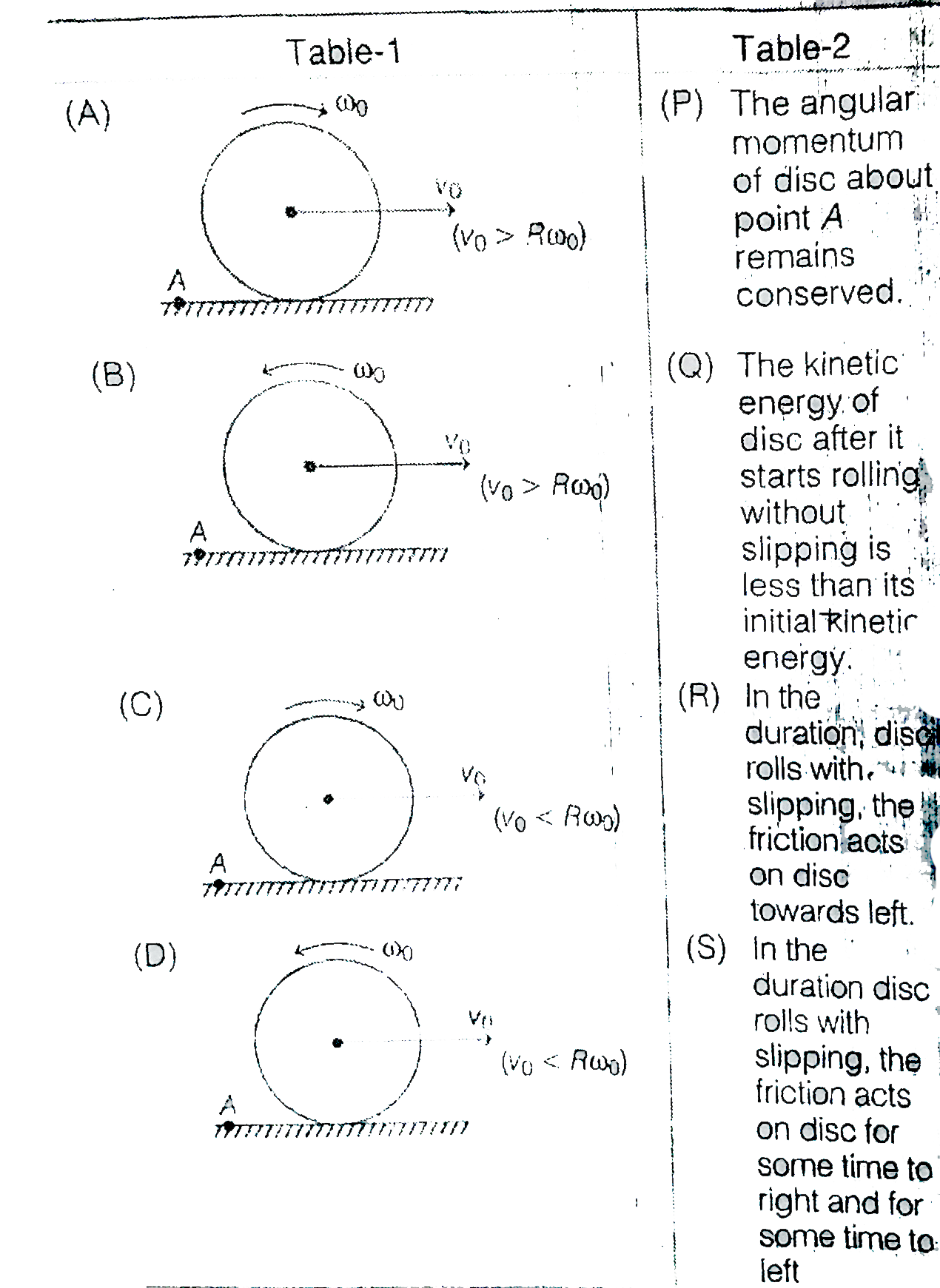A solid and a hollow sphere are released from the top of a sufficiently rough inclined plane. The solid sphere has same mass but its radius is half of the radius of hollow sphere. Both are performing pure rolling Which of the following statements is correct regarding their kinetic energy when they reach at the bottom of plane? (K = Kinetic energy)
Khollow<Ksolid
Khollow=Ksolid
Khollow=2Ksolid
Khollow>Ksolid
To solve the problem, we need to analyze the kinetic energy of both the solid and hollow spheres when they reach the bottom of the inclined plane.
1. Understanding the Problem:
We have two spheres: a solid sphere and a hollow sphere. Both are released from the same height on an inclined plane and are rolling without slipping. The solid sphere has a radius (R) that is half that of the hollow sphere (2R).
2. Kinetic Energy Formula:
The total kinetic energy (K) of a rolling object is given by:
K=12mv2+12Iω2
where I is the moment of inertia and ω is the angular velocity. For pure rolling, v=Rω.
3. Moment of Inertia:
The moment of inertia for the solid sphere is:
Isolid=25mR2
The moment of inertia for the hollow sphere is:
Ihollow=23m(2R)2=83mR2
4. Using the Rolling Condition:
For both spheres, the relationship between linear velocity v and angular velocity ω is:
ω=vR
Therefore, we can express the kinetic energy in terms of v.
5. Kinetic Energy Calculation:
For the solid sphere:
Ksolid=12mv2+12(25mR2)(vR)2
Simplifying gives:
Ksolid=12mv2+15mv2=710mv2
For the hollow sphere:
Khollow=12mv2+12(23m(2R)2)(v2R)2
Simplifying gives:
Khollow=12mv2+13mv2=56mv2
6. Comparing Kinetic Energies:
To compare the kinetic energies, we need to find a common denominator:
Ksolid=710mv2andKhollow=56mv2
Finding a common denominator (30):
Ksolid=2130mv2andKhollow=2530mv2
Thus, Khollow>Ksolid.
7. Conclusion:
Therefore, the kinetic energy of the hollow sphere is greater than that of the solid sphere when they reach the bottom of the incline.
Final Answer:
The correct statement is that the kinetic energy of the hollow sphere is greater than that of the solid sphere.
We have two spheres: a solid sphere and a hollow sphere. Both are released from the same height on an inclined plane and are rolling without slipping. The solid sphere has a radius (R) that is half that of the hollow sphere (2R).
The total kinetic energy (K) of a rolling object is given by:
K=12mv2+12Iω2
where I is the moment of inertia and ω is the angular velocity. For pure rolling, v=Rω.
The moment of inertia for the solid sphere is:
Isolid=25mR2
The moment of inertia for the hollow sphere is:
Ihollow=23m(2R)2=83mR2
For both spheres, the relationship between linear velocity v and angular velocity ω is:
ω=vR
Therefore, we can express the kinetic energy in terms of v.
For the solid sphere:
Ksolid=12mv2+12(25mR2)(vR)2
Simplifying gives:
Ksolid=12mv2+15mv2=710mv2
Khollow=12mv2+12(23m(2R)2)(v2R)2
Simplifying gives:
Khollow=12mv2+13mv2=56mv2
To compare the kinetic energies, we need to find a common denominator:
Ksolid=710mv2andKhollow=56mv2
Finding a common denominator (30):
Ksolid=2130mv2andKhollow=2530mv2
Thus, Khollow>Ksolid.
Therefore, the kinetic energy of the hollow sphere is greater than that of the solid sphere when they reach the bottom of the incline.
The correct statement is that the kinetic energy of the hollow sphere is greater than that of the solid sphere.
Topper's Solved these Questions
Similar Questions
A solid sphere hollow sphere disc, ring and hollow cylinder are relased from the top of a fixed inclined when all of them have same mass and radius

View SolutionA solid sphere, a hollow sphere, a solid disc and a hollow cylinder are allowed to roll down a sufficiently rough inclined plane starting from rest. All have same mass and radius.

View Solution
Knowledge Check
A solid sphere, a hollow sphere and a dise are released from the top of a frictionless inclined plane so that they slide down the inclined plane (without rolling). The maximum acceleration down the plane is
Afor the solid sphereBfor the hollow sphereCfor the discDthe same for all bodiesA hollow spherre is released from rest on a rough inclined plane as shown in the figure. Find the velocity of point of contact as a function of time. ( m = mass of hollow sphere, R = radius of sphere )
 A2tB4tC6tD8t
A2tB4tC6tD8tA solid sphere, a hollow sphere and a ring are released from top of an inclined plane (frictionsless) so that they slide down the plane. Then maximum acceleration down the plane is for (no rolling) :
ASolid sphereBHollow sphereCringDAll same
A hollow sphere is released from top of an inclined plane of inclination 30° and length of inclined plane is I. If sphere rolls without slipping then its speed at bottom is
View SolutionA hollow sphere is released from top of an inclined plane of inclination 30º and length of inclined plane is L. If sphere rolls without slipping then its speed at bottom is
View SolutionA hollow sphere is released from the top of an inclined plane of inclination θ and length L. If a hollow sphere rolls without slipping, what will be its speed when it reaches the bottom?
View SolutionA solid sphere, a hollow sphere and a ring are released from top of an inclined plane (frictionless) so that they slide down the plane. Then maximum accelerraton down the plane is for (no rolling)
View SolutionA solid sphere, disc and hollow sphere are placed at the top of an inclined plane. Surface is sufficiently rough to provide pure rolling. All the objects are released from a state of rest
View Solution
